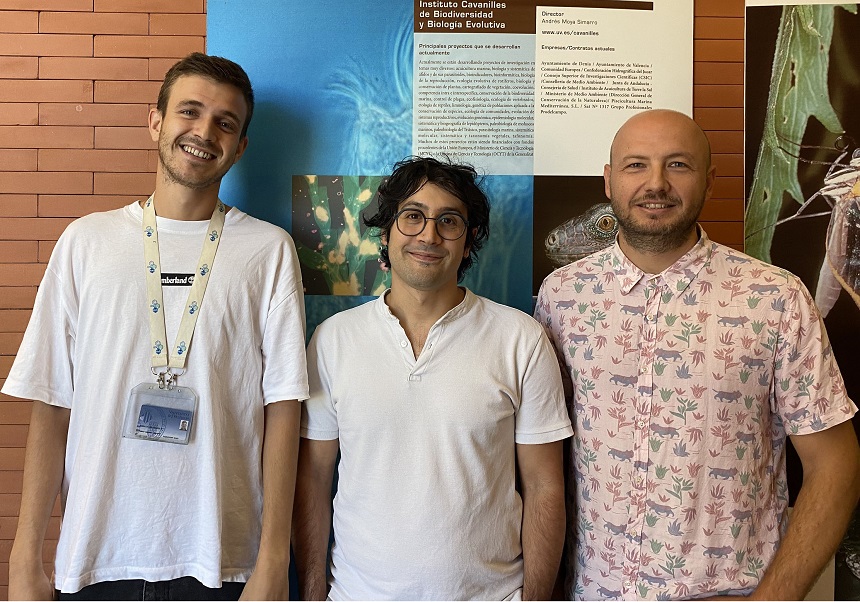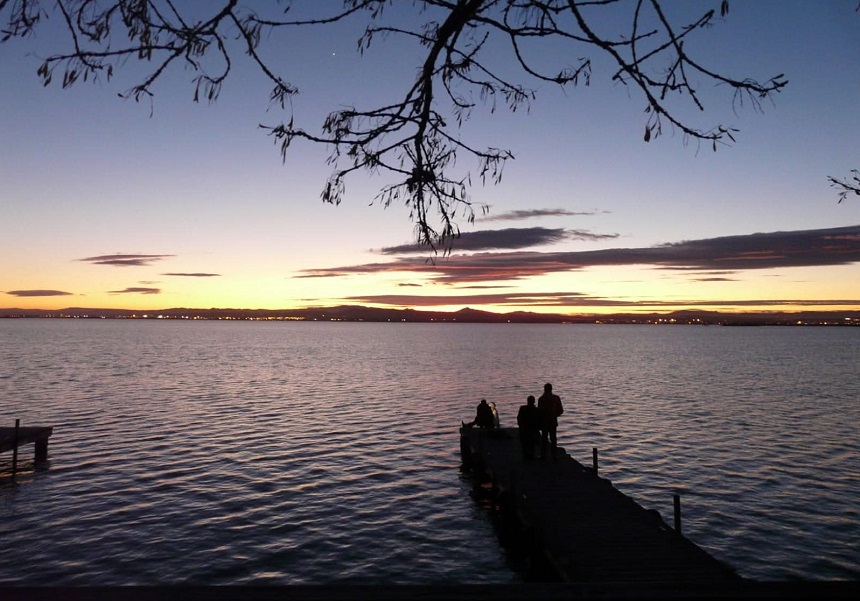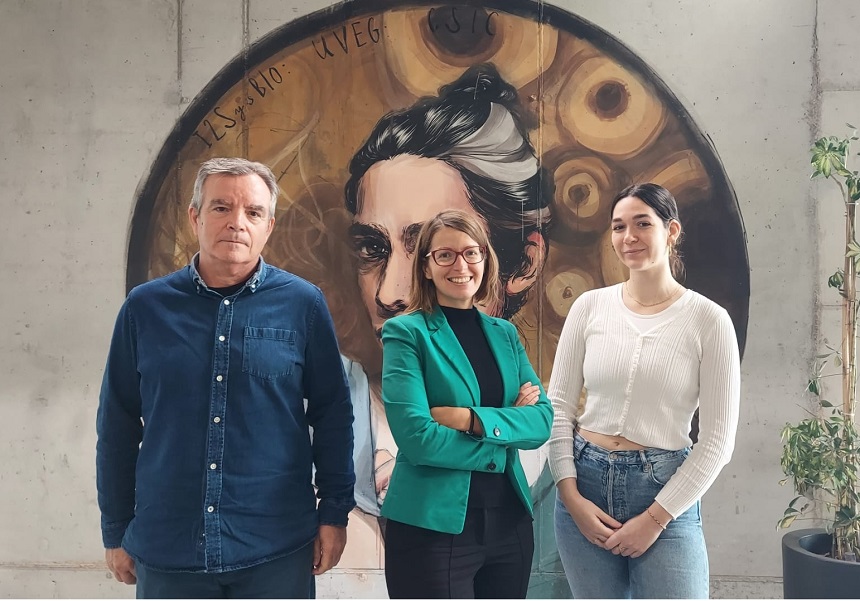The lake of the Albufera Natural Park receives up to 1.5 tonnes of pesticides every year
- Marketing and Communication Service
- Scientific Culture and Innovation Unit
- September 16th, 2025

Pablo Amador, Valerio Gherardi and Andreu Rico, researchers from the Limnology Group of the Cavanilles Institute of Biodiversity and Evolutionary Biology at the University of Valencia (UV), have carried out a pioneering study that tracks the pathway taken by agricultural pesticides in the Albufera Natural Park, step by step, from their application in rice fields to their arrival in the lake and the Mediterranean Sea. The pesticides are carried away by runoff and drainage water, contaminating the park’s aquatic ecosystems within a few hours of their application.
The researchers modelled the environmental dispersion of eight pesticides applied over a ten-year period to the park’s rice paddies, under real conditions of climate, agricultural management and water circulation. The study, published in the journal Environmental Pollution, integrates a high-resolution hydrological model that simulates agricultural practices in rice cultivation with a hydrological model implemented at regional scale.
“The results of the study show that around 35 tonnes of pesticides are applied annually in the Albufera Natural Park, of which seven tonnes are released from the rice fields into the park’s waters and approximately 1.5 tonnes reach the Albufera lake”, explains Pablo Amador.
It also concludes that 0.6 tonnes of pesticides are discharged into the Mediterranean Sea via the golas (channels), and that the most commonly used compound is the herbicide Bentazone, with 11 tonnes. Rice cultivation occupies approximately 130 km² of the park’s total area (209 km²).
The tool used by researchers at the UV’s Cavanilles Institute makes it possible to accurately represent the pulses of inflow and outflow in the park’s traditional irrigation system, as well as to trace the transport of pollutants in water bodies on a daily scale. The resolution achieved far exceeds that of conventional monitoring or of environmental models published to date.
Among other findings, Amador points out that “the model demonstrates that the pesticides used intensively in rice cultivation are carried away by runoff and drainage water, so that they contaminate the aquatic ecosystems of the natural park within just a few hours after application”.
Furthermore, the compounds posing the greatest risk to aquatic organisms in the park are the fungicides Azoxystrobin and Difenoconazole, and the herbicide MCPA. According to Andreu Rico, “the areas with the highest risk of exposure are located in the south of the lake, where agricultural return flows converge with high pollutant loads”.
The scientific study, which also involved Yasser Fuentes-Edfuf (IE University) and Claudia Martínez-Megías (Tragsatec), further concludes that during the rice growing season mixtures of up to five pesticides simultaneously exceeding the risk threshold in the lake have been detected, with maximum risk occurring in August, reaching levels capable of causing chronic effects in up to 40% of the lake’s aquatic species. “This shows that pollution extends beyond the rice fields and affects the entire aquatic system of the Natural Park”, says Andreu Rico.
Reference:
Amador, P., Gherardi, V., Fuentes-Edfuf, Y., Martínez-Megías, C., Rico, A. (2025). Thinking big! Landscape-scale evaluation of pesticide pollution and ecological risks in a protected Mediterranean wetland. Environmental Pollution, 384, 126918. https://doi.org/10.1016/j.envpol.2025.126918
Categories: Internacionalització recerca , Difusió i comunicació científica , Grups de recerca , Institut Cavanilles de Biodiversitat i Biologia Evolutiva , Cultura Científica , Investigació a la UV , Recerca, innovació i transferència
















